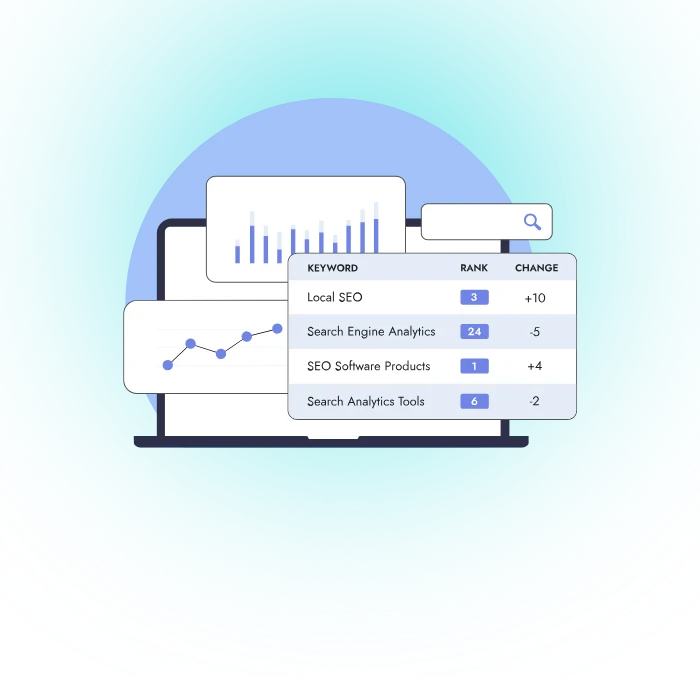What is Web 3.0 in Simple Words?
Web 3.0 is the next phase of the web where apps use shared ledgers and cryptography so users can prove identity, move value, and take data anywhere. Think of it as the “read-write-own” web. You sign with a wallet, not a password, and your stuff is portable between apps. Definitions vary, but the plain idea stays this simple.
In practice, a wallet holds keys that sign messages. A blockchain records those signed actions. Apps coordinate over open protocols instead of private databases. This cuts the need for an intermediary and makes “who controls what” far clearer than typical cloud accounts.
History of Web 3.0
The web evolved in waves. First pages were static. Then platforms turned the web social and interactive. Now the push is to reduce platform lock-in by shifting identity and data ownership to users. The label “Web3” was popularized in 2014 by developer Gavin Wood, and it keeps getting refined as the stack matures.
Web 1.0
Web 1.0 served mostly read-only pages. Sites published, people consumed. Forums and early portals existed, but identity lived on each site, and exporting data felt clunky. Pages loaded from a single server, and content moved slowly compared to the web we know now.
Web 2.0
Web 2.0 made the web interactive. Users generated content, and platforms handled identity, storage, discovery, and monetization. Convenience grew, yet data sat inside walled gardens. HTTP got faster, browsers improved, and mobile pushed the web everywhere—but control concentrated.
Web 3.0
Web 3.0 tries to flip that center of gravity. Identity and assets sit with the user, not the app. Wallets, smart contracts, and open networks make portability possible. Terms differ across sources, but consensus points to decentralization and user ownership as core.
Comparison Between Web 1.0, 2.0 and 3.0
| Era | Who holds identity | Data location | Business model |
|---|---|---|---|
| Web 1.0 | Each website | Single server | Page views |
| Web 2.0 | Platforms | Platform clouds | Ads, platform fees |
| Web 3.0 | Users (wallets) | Shared networks + user storage | Protocol fees + tokens |
Importance of Web 3.0
Web 3.0 matters because it rebalances the relationship between users and platforms. You can carry identity and assets across apps. Choice expands since switching costs drop. Developers build on open rails instead of re-creating the same auth, payments, and marketplace stack inside each product.
One small note from real life: wallet resets terrify newcomers. In team workshops we watched folks freeze after a seed-phrase prompt. The design lesson was blunt—hide cryptography until needed, offer safe defaults, and explain recovery in plain words, not crypto lingo. Our first try missed that, then we fixed it.
Features of Web 3.0
Web 3.0 bundles several traits that show up together in strong projects. Not every app has all of them on day one, yet the direction stays consistent: open protocols, user keys, composable backends, and fewer permissions to get started.
Decentralization
Data and logic run across many nodes rather than one company’s database. That reduces single points of failure and lets anyone verify the state. Storage systems split files into pieces and spread them widely that helps with resilience and privacy if done right.
Trustless and Permissionless
You don’t need to trust an operator to keep books honestly; the network validates rules publicly. Anyone can join as a user or builder without asking a gatekeeper for API keys. Smart contracts hold funds and logic so execution is transparent and predictable.
Connectivity
Wallet standards and transport upgrades make the stack feel more connected. Browsers now resolve decentralized resources, and networking protocols advance underneath. Brave resolves IPFS links natively and keeps adding Web3 integrations, while HTTP/3 over QUIC improves performance in modern stacks.
AI and Machine Learning
Web 3.0 tools increasingly pair on-chain truth with off-chain models. AI assists with spam filtering for decentralized mail, fraud scoring for marketplaces, and ranking content without central curation. The line between “web” and “data pipeline” keeps thinning, yet provenance remains auditable.
Key Benefits of Web 3.0
Interaction
People interact directly with apps and with each other through wallets and protocols. No extra accounts, fewer password resets. Composability means an app can reuse identity and reputation signals from another app without central brokers.
Ownership
Assets, usernames, and even domain names can be portable. You can sell or move them without filing a support ticket. That portability enables healthier competition and lets projects ship smaller surfaces rather than giant monoliths. Ownership here feels real, not performative.
Permission
Developers can deploy without asking a platform. Users can try new tools without approval from a marketplace reviewer. This lowers friction and speeds learning loops, though it also increases the need for careful safety checks.
Privacy
Keys prove things without exposing raw secrets. You can sign a message to show control of an account, not your email or phone. Some chains add shielded transactions in certain wallets, which gives stronger confidentiality for sensitive payments.
Speed
Base layers may feel slow, yet rollups and sidechains move fast enough for many apps. UX patterns batch actions, show optimistic results, and settle in the background. Data move slower than users expect sometimes, so good apps mask latency with friendly progress flows.
Disadvantages of Web 3.0
Cost
On-chain actions can cost network fees. During busy periods, fees spike and simple tasks feel pricey. Projects often batch or route to cheaper layers, but economics still shape design choices. Good fee design beats magic thinking here.
Hardware
Running full nodes or high-throughput indexers takes bandwidth and storage. Many teams rely on providers, which can recentralize parts of the stack. Builders must plan exit ramps to self-host or multi-home infra later.
Regulation
Rules vary by country and change often. Apps that touch tokens or identity must track policy shifts and adapt. Compliance is not optional; users feel the cost when rules are ignored, and teams lose months trying to patch late.
Scalability
Blockchains trade off security, decentralization, and throughput. Rollups help, but data availability and finality still matter. Designs that push every click on-chain tend to stall; hybrid patterns usually win.
Web 3.0 Implementation Challenges
Technical challenges
Tooling improves weekly yet still feels uneven. Libraries differ across chains, wallet APIs change, and indexing is its own craft. We’ve seen teams ship faster by choosing one chain and one wallet standard first, then adding bridges only when the core experience holds steady.
User experience
Most users want “works like the web” with the benefits of self-custody hidden under the hood. Seed phrases, chain switches, gas, and approvals are mental tax. Wallet resets is scary, error copy often cryptic, and recovery flows feel brittle. Fixes include progressive disclosure, human-readable signing prompts, and safe defaults across networks.
Adoption
Enterprises want clarity on risk, compliance, and support. Startups want speed, reach, and good docs. The trick is to meet both: clear contracts, testnets for pilots, and data export paths so no one feels boxed in.
Governance
Tokens let users steer decisions, yet voting can drift to a few whales. Healthy projects publish charters, add safeguards, and experiment with reputation that grows from useful work, not only wallet size.
Top 5 Examples of Web 3.0 Applications
Here are Top 5 applications build using Web 3.0 Technologies.
1. Brave Browser
Brave ships a browser-native wallet, resolves IPFS links, and recently introduced on-chain .brave domains in partnership with a naming provider. That blends everyday browsing with decentralized identity and publishing in a way normal users can reach.
2. OpenSea
OpenSea is a large NFT marketplace that lets people mint, buy, and resell digital items across several chains. Fees and royalties have shifted over time, with OpenSea Pro running promotional low fees while royalty enforcement varies by collection and chain. Check current marketplace terms before listing.
3. Storj
Storj offers decentralized, S3-compatible object storage across independent nodes. Files are split, encrypted, and distributed so a single outage does not take your data down. Devs can use familiar tools like rclone or the AWS CLI to move data.
4. Everledger
Everledger built provenance tools for diamonds and other goods, using blockchain records to track origin and events across a supply chain. The company’s Australian entity entered administration in 2023, then the business restructured and continued with a smaller footprint. Status matters if you evaluate vendors.
5. DMail
Dmail experiments with decentralized email that links web2 inboxes with on-chain identity. Recent updates include integrations on L2 networks so encrypted messages move with lower costs, plus features that bridge traditional accounts to Web3-style messaging.
How to Become Web 3.0 Developer?
Web 3.0 development blends strong web skills with a few new primitives: wallets, contracts, indexing, and protocol thinking. The fastest path we’ve seen looks boring on purpose. Learn the basics, build tiny things, read code, then ship slightly bigger things without breaking safety.
Understand Web 3.0 and Blockchain Basics
Start by learning how a blockchain orders transactions and why private keys matter. Study what a wallet signs, what a node verifies, and where a smart contract fits. Keep one mental model for “finality” and one for “latency.” Re-explain it to a non-technical friend—if you can’t, the defintion remains fuzzy.
Core Programming Languages and Tools
Pick a chain and learn its contract language and SDKs. Solidity plus TypeScript covers a wide surface area today. Add the basics of indexing and a local devnet so you can test without cost. Don’t try every chain at once; depth beats breadth early.
Frontend & Backend Integration Skills
Treat the wallet like a sign-in method and a tiny HSM in the browser. Map user flows: connect, sign message, call contract, confirm result. Backend services still matter for search, analytics, and email. Keep keys server-side off-limits, and never log secrets—you’d be surprised how often teams slip here.
Build Real Projects and Contribute
Ship a minimal dApp that does one useful thing. Write tests that simulate failure cases. Join repos that need docs or bugfixes. We once ran a weekend hack night and discovered our allowance logic broke on empty approvals; test coverage didn’t catch it. Small projects surface gaps you won’t see in tutorials.
Stay Updated and Network
Follow core client teams, wallet maintainers, and security researchers. Read changelogs. Join local meetups and online forums. Curate two or three newsletters to avoid noise. It’s wierd how quickly APIs shift—pin versions, freeze dependencies near launch, and budget time for upgrades.
The Bottom Line
Web 3.0 is a set of choices that move control closer to the user and push apps toward open rails. Start small, avoid hype, and keep the parts people touch simple. We’ve learnt this the hard way: clear copy and careful defaults beat clever tricks every single time.
If you want a short, practical assessment, we can review a target flow, pick one chain, and sketch a wallet and data plan that fits your stack. No push, just straight trade-offs and a build path that doesn’t blow up later.
FAQs
1. What are the main differences between Web 2.0 and Web 3.0?
Web 2.0 gives you rich features by routing identity and data through big platforms. Web 3.0 keeps the experience rich while moving identity and assets to user-owned wallets. That switch reduces lock in and makes switching apps easier. Real life example is a wallet login you can reuse across many sites without creating new accounts.
2. What industries are adopting Web 3.0 technologies?
Financial apps test payments and asset rails, games experiment with tradable items, supply chains track provenance, and media trials on direct fan markets continue. One concrete example is decentralized storage for video archives to cut single-region risk. Pick problems where shared state or portability beat a normal database.
3. What is Web 3.0 Used For?
Web 3.0 is used to prove identity without passwords, move value without payment intermediaries, and own portable items like tickets or names. Dev teams also uses it to coordinate work with shared rules inside smart contracts. Small step is signing a message to verify control of an address instead of emailing codes
4. What is the difference between Web 3.0 and blockchain?
Blockchain is the ledger that records actions securely. Web 3.0 is the broader idea of user-owned web experiences that often rely on that ledger. You can build Web 3.0 features like portable identity with or without heavy on-chain logic.
5. What is a Web 3.0 browser?
Web 3.0 browser includes a wallet, dApp support and ways to reach decentralized content like IPFS. Some add human-readable names and direct protocol integrations so users don’t juggle extensions






